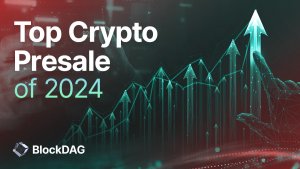Is a MAM price war on the horizon? Neil Woodford does away with research fees for buy/sell analysis
Charging research fees to high net worth investors in order to pay for analysis relating to what instruments to buy and sell is a common, and widely accepted practice among fund managers. In the analog world where a relationship with a private wealth manager is face to face, this has been a prevalent business model […]

Charging research fees to high net worth investors in order to pay for analysis relating to what instruments to buy and sell is a common, and widely accepted practice among fund managers.
In the analog world where a relationship with a private wealth manager is face to face, this has been a prevalent business model for many years, and in the electronic trading world, a similar fee-based model is often charged to customers whose trading accounts are managed by a multi-account manager (MAM) in which the order flow of several retail trading automatically echo that of the master account which is traded by a portfolio manager.
Usually a ‘success fee’ is charged by managers of electronically traded MAM accounts, that being a pre-determined percentage of the profits, often factored in to an agreement with a retail FX brokerage as part of a MAM or IB agreement.
This may well be all set to change, as high profile fund manager Neil Woodford, founder of British wealth management company Woodford Asset Management has brought into effect a new business model that is, according to the company, aimed at creating greater transparency, however it may well forge the way ahead to change the entire method by which fees are charged by portfolio managers.
In the MAM sector, many portfolio managers have two sources of remuneration. The first is the aforementioned success fee from their clients, which brokerages automatically manage according to pre-signed portolio management (MAM account) agreements. The second is IB commission from the brokerages.
If Mr. Woodford’s model becomes widely accepted and followed, it could herald the end of the success fee/research fees being charged by portfolio managers on top of brokerage commission.
How does this work, and why?
Woodford Asset Management states:
“Dealing commissions for fund investors have historically had two components: the cost of researching the investment decision and the cost of executing it. In recent years, regulation has increasingly sought to separate the two. Fund managers consume research from various sources (economists, investment strategists, analysts) and in various forms (face-to-face meetings, telephone conversations, stock specific and bespoke research reports). This research helps to inform and shape the overall investment strategy as well as investment decisions at the stock specific level.”
The company has taken a look at how it should be remunerated for trading and investing on behalf of clients, and from April 1, research costs are being paid by Woodford, rather than by the fund.
“Importantly, we are not increasing our fees to cover this additional cost. Investors are, in effect therefore, getting a price cut, which will immediately benefit the future performance of the fund” states Woodford Asset Management.
According to the company’s figures, during 2015, research costs represented a cost of 0.02% of the fund’s net asset value to fund investors, based on the fund’s average size during the year. This number will slowly reduce over the next 12 months, and will disappear completely by April 2017.
Execution costs
Mr. Woodford, whose expertise in bringing his institutional knowledge into the realms of wealthy retail clients, is very well versed in operating high ticket funds. He previously operated the Invesco Perpetual Income, and Invesco Perpetual High Income funds, with respectively £10.36 billion and £13.64 billion in assets before leaving the firm, his position at the time being Head of UK Equities, to found Woodford Asset Management, therefore in terms of execution of deals, he is a gentleman of sound experience.
As one of Britain’s large wealth managers, Woodford Asset Management has highlighted the two remuneration methods clearly.
The company has detailed its execution methodology, stating that dealing commissions for fund investors have historically had two components: the cost of researching the investment decision and the cost of executing it, both common practices, however by bringing this to the attention of investors, this alludes to the firm seeking to highlight the brokerage commission that it makes as the sole means of making a profit for .
Woodford Asset Management understands that in recent years, regulation has increasingly sought to separate the two. Nearly all trades that the company undertakes on behalf of its investors will still be subject to a small execution commission, which is added to the cost of that trade and paid to the market counterparty with whom it deals for that specific trade. In total, ‘execution’ represented a cost of 0.02% of the fund’s net asset value in 2015, based on the fund’s average size during the year.
These costs will inevitably be linked to the rate of portfolio turnover – the cost of execution will be higher for a fund which trades regularly, and lower for a fund which is managed with a long-term investment perspective. Indeed, it is not widely recognized by retail investors or traders that portfolio managers are receiving IB commissions or brokerage commission, as well as a success or research fee.
Clearly, what is being emphasized here is that Woodford Asset Management will seek to make its revenues purely from trading, and from the commissions being generated on each trade, as opposed to charging external fees, paving the way for this to set what may well become a precedent.









